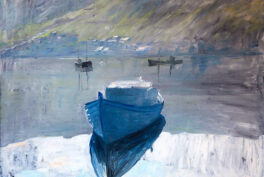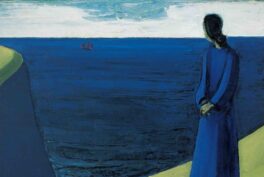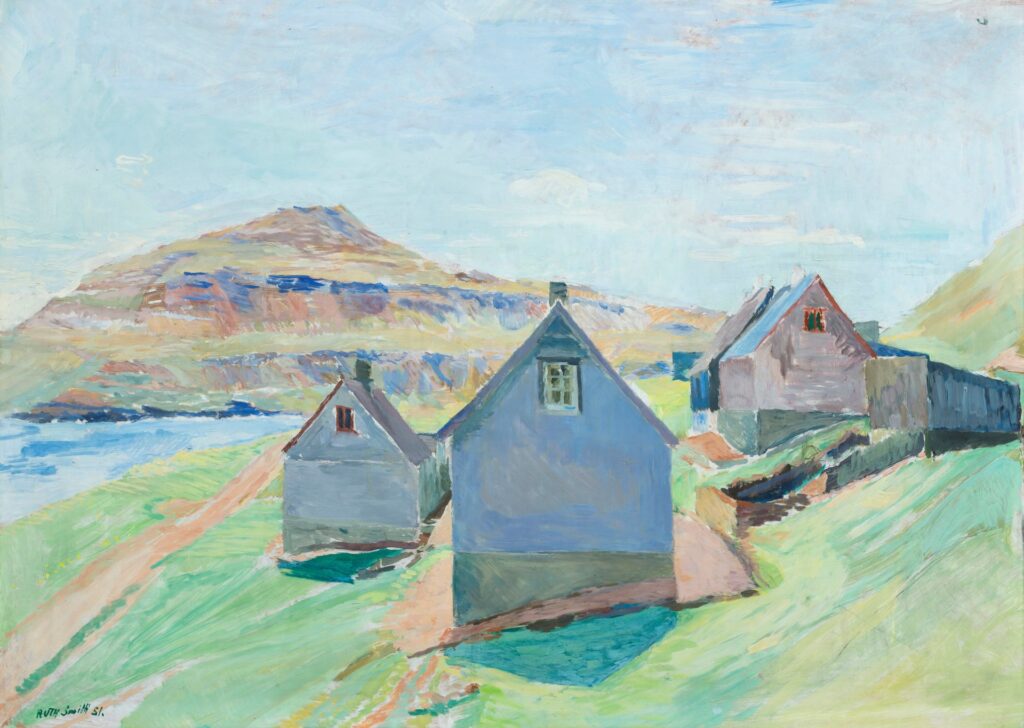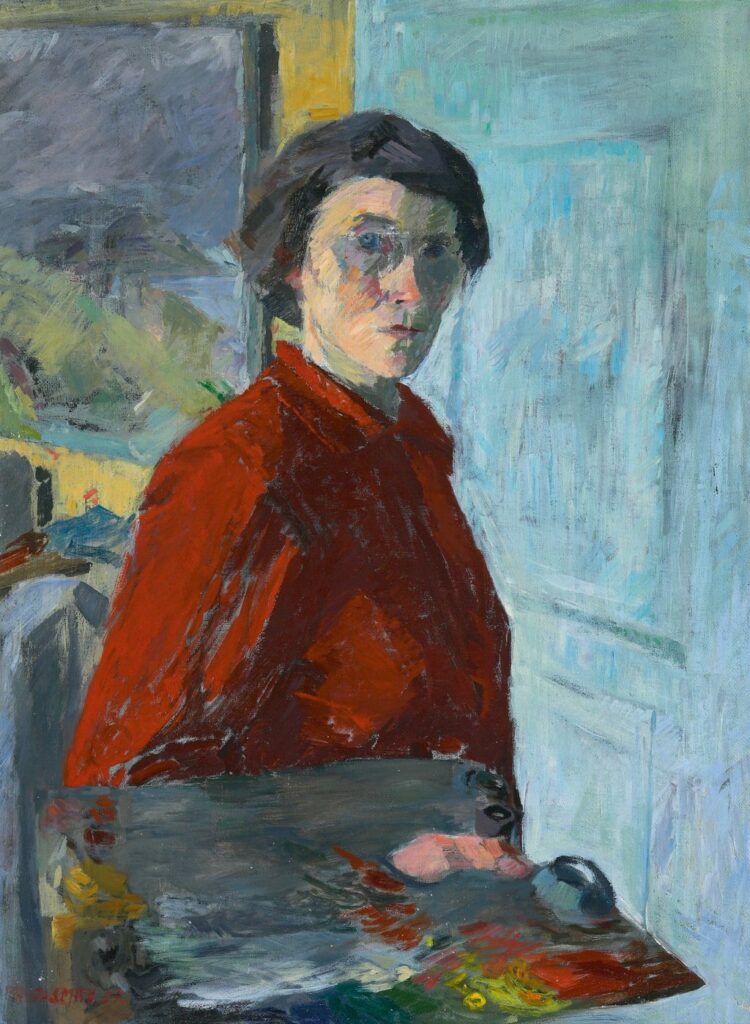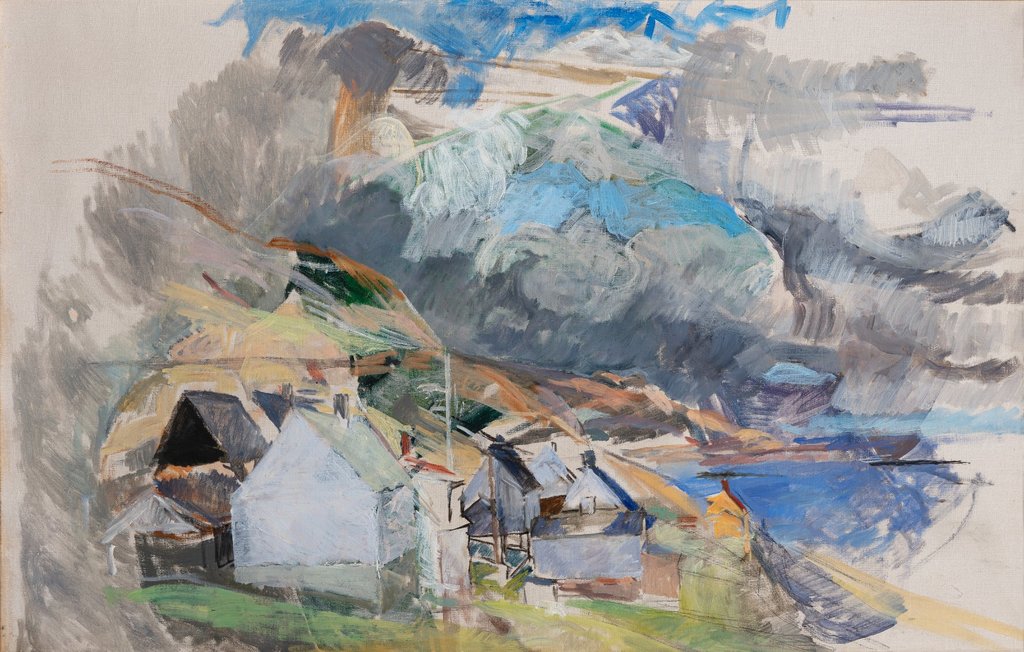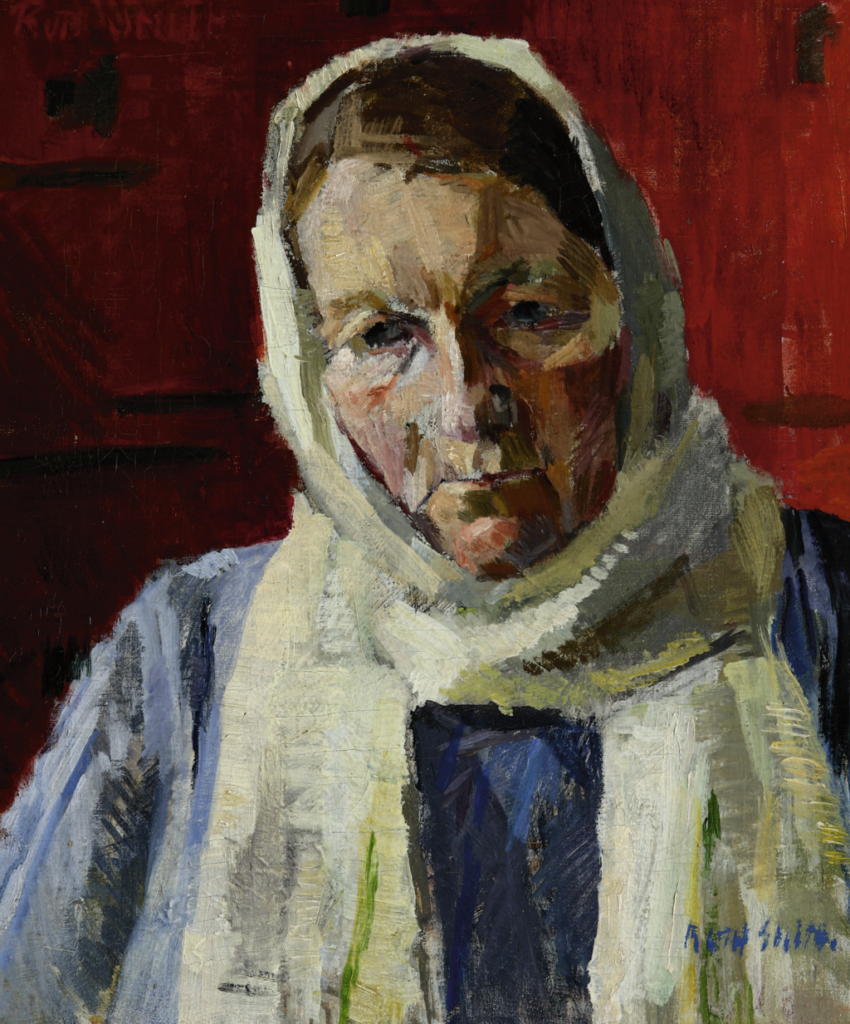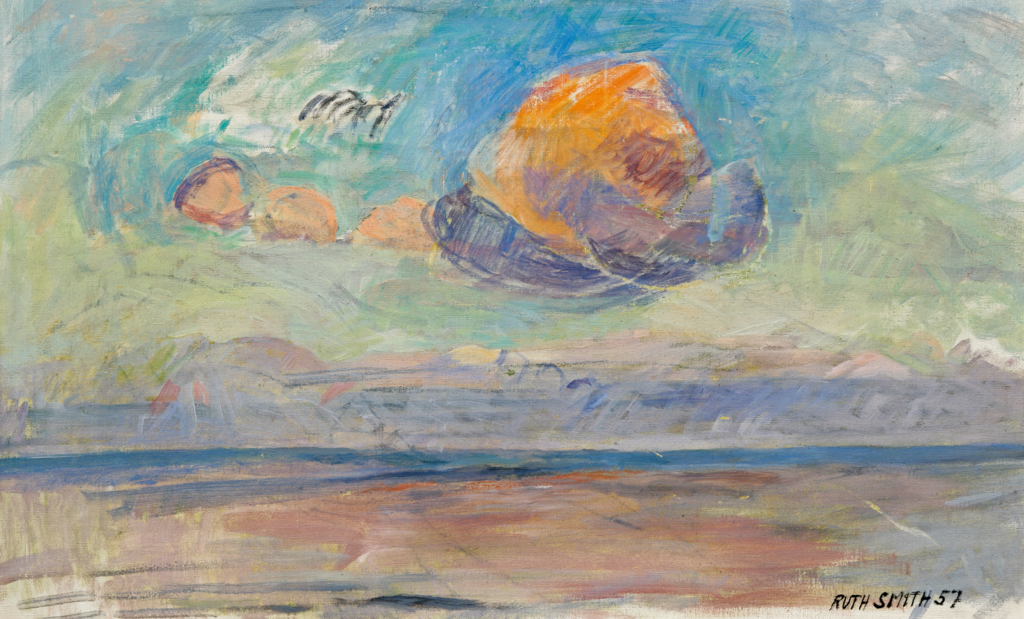Melancholia and Meningitis
In the following years Smith would create some of her most iconic self-portraits and captivating landscape paintings, notable for their deliberately unfinished quality. It is widely suggested that the self-portraits reveal the artist’s deteriorating eyesight and the deepening melancholy of her mental state.
Consequently, some interpret these paintings as a form of foreshadowing of the artist’s tragic demise in 1958 at the young age of 45. An alternative theory proposes that Smith may have suffered from meningitis associated with a tuberculosis infection. This illness, characterized by the invasion of bacteria into the nervous system, could have played a significant role in her untimely death.
On the morning of May 28, 1958, Ruth Smith’s lifeless body was discovered on the foreshore of Vágsfjørð after being missing for over 24 hours. She lay between two stones, dressed only in a nightgown. Witnesses described her appearance as peaceful, almost as if she were asleep. Clutched in her hand was some seaweed. The circumstances leading to her death remain unknown, but it is presumed that she had been in the water and the cold likely played a role in her demise. At the age of 45, Ruth Smith passed away.
The panoramic view of the fjord from Smith’s homeland became a recurring motif in her final years. The painting Skýggj og blá luft II (above), with its portrayal of a perfectly calm sea, possesses an otherworldly quality. Nils Ohrt aptly describes it as a symbol of the artist’s yearning for freedom, tranquility, and peace.

